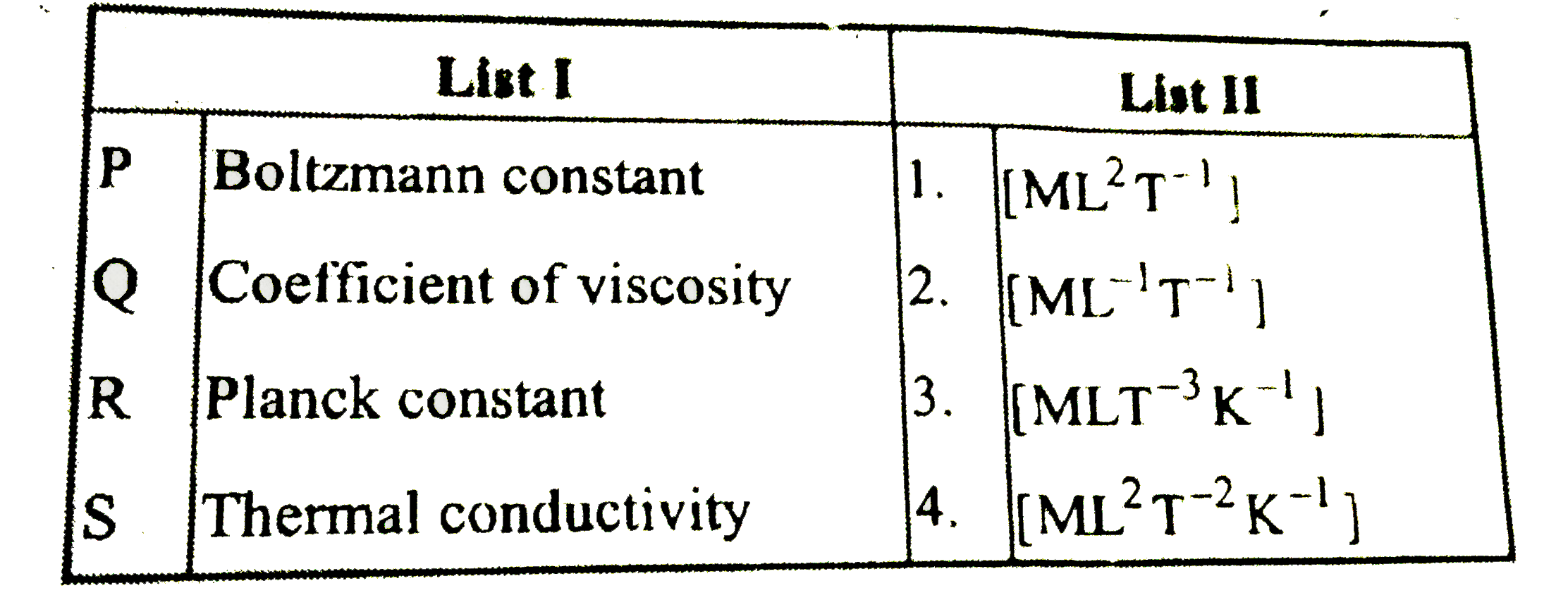Two vectors →P and →Q are added, the magnitude of resultant is 15 units. If →Q is reversed and added to →P resultant has a magnitude √113 units. The resultant of →P and a vector perpendicular →P and equal in magnitude to→Q has a magnitude Solution in Gujrati
13 units
17 units
19 units
20 units
The correct Answer is:A
P2+Q2+2PQcosθ=225…(i)
P2+Q2−2PQcosθ=113 …..(ii)
By adding (i) & (ii) 2(P2+Q2)=338
P2+Q2=169⇒√P2+Q2=13

Topper's Solved these Questions
- UNIT & DIMENSIONS, BASIC MATHS AND VECTOR Book:ALLEN Chapter:UNIT & DIMENSIONS, BASIC MATHS AND VECTOR Exercise:Exercise (S-1)
Explore 22 Videos
- UNIT & DIMENSIONS, BASIC MATHS AND VECTOR Book:ALLEN Chapter:UNIT & DIMENSIONS, BASIC MATHS AND VECTOR Exercise:Exercise (S-2)
Explore 7 Videos
- UNIT & DIMENSIONS, BASIC MATHS AND VECTOR Book:ALLEN Chapter:UNIT & DIMENSIONS, BASIC MATHS AND VECTOR Exercise:Exercise (J-A)
Explore 7 Videos
- TEST PAPERSBook:ALLEN Chapter:TEST PAPERSExercise:MATHS
Explore 1 Video
- WAVE OPTICSBook:ALLEN Chapter:WAVE OPTICSExercise:Exercise 2 (Previous Year Questions)
Explore 7 Videos
Similar Questions
A particles is in a unidirectional potential field where the potential energy (U) of a particle depends on the x-coordinate given by Ux=k(1−cosax) & k and 'a' are constant. Find the physical dimensions of 'a'&k.
View SolutionThe Vander wal's equation for n moles of a real gas is given by (P+n2aV2)(V−nb)=nRT, where
P pressure of gas, V= volume of gas, T= temperature of gas
R= molar gas constant, a & b= Van der waal's constant
Which of the following have the same dimensions as those of nRT.
View SolutionMatch List I with List II and select the correct answer using the codes given below the lists :

View SolutionIf complex number z(z≠2) satisfies the equation z2=4z+|z|2+16|z|3, then what is the value of |z|4 ?
View SolutionElectromagnetic waves are transverse is nature is evident by
View SolutionThe resultant of two vectors vec(P) and vec(Q) is vec(R ) . If the magnitude of vec(Q) is doubled, the new resultant vector becomes perpendicular to vec(P) . Then, the magnitude of vec(R ) is equal to
View SolutionIf vector P, Q and R have magnitude 5,12,and 13 units and vec(P)+vec(Q)=vec(R ) , the angle between Q and R is
View SolutionThe resultant →Pand→Q is perpendicular to →P. What is the angle between →Pand→Q?
View SolutionTwo vector vec P and vec Q act at a point and have a resultant R_1. If vec Q is replaced by the vevtor ( vec (R_1^2-P^2)/Q show tht the reaultant is still of magnitude vec R_1 .
View SolutionThe resultant of two vectors →P and →Q is →R. If →Q is doubled then the new resultant vector is perpendicular to →P. Then magnitude of →R is :-
View Solutionएक वेक्टर →P का परिमाण 3 तथा दुसरे वेक्टर →Q का परिमाण 8 है यदि दोनों वेक्टर अभिलंबवत हो तो वेक्टर आरेख खींचकर (→P+→Q) का परिमाण ज्ञात कीजिये
View Solutionदो परस्पर लम्बवत वेक्टरो →P तथा →Q के परिमाण क्रमशः 3 तथा 4 है नामांकित वेक्टर आरेख बनाकर →P+→Q तथा →P−→Q बनाकर तथा का परिमाण ज्ञात कीजिये
View SolutionTwo vectors vec P and vec Q are inclinded to each other at 60^(@) . The magnitude of vec P and vec Q are 10 and 15 units respectively. What is the angle (alpha) made by their resultant vec R" with "vec P ?
View SolutionThe maximum value of the magnitude of the resultant of two vectors →Pand→Q is 24 units and the minimum value of the magnitude of their resultant is 4 units. What is the ratio of the magnitudes of the vectors →Pand→Q ?
View SolutionThe resultant of two vectors →P and →Q is →R. If the magnitude of →Q is doubled, the new resultant becomes perpendicular to →P, then the magnitude of →R is
View SolutionThe resultant of two vectors →P and →Q is →R. If the magnitude of →Q is doubled, the new resultant becomes perpendicular to →P, then the magnitude of →R is
View Solution